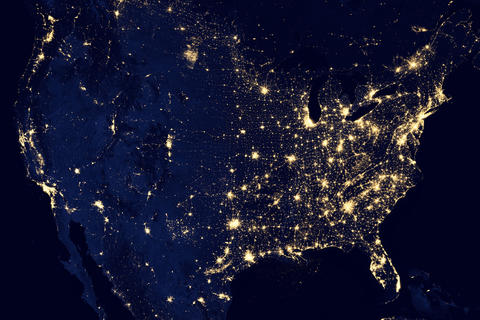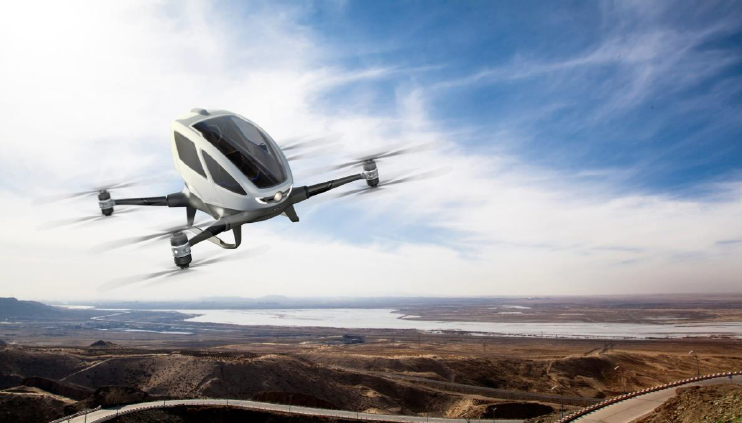
Charles Madary
Charles is a Senior at Penn State University - Berks studying Electro-Mechanical Engineering.
The United States’ electrical grid is comprised of a vast network of power plants, transmission lines, and distribution centers that have served as the backbone of the nation’s energy infrastructure for over a century. The power grid is divided into three major regions – the Eastern Interconnection, which operates in states east of the Rocky Mountains; the Western Interconnection, which covers the Pacific Ocean to the Rocky Mountain states; as well as the Texas Interconnected System covering the state of Texas. The three systems have weak ties between them to act as power transfers, but they largely rely on independent systems to remain stable and reliable. The United States’ economy, national security, and even the health and safety of our citizens depend on the reliable delivery of electricity nationwide. However, the power grid in its current state is aging, and faces numerous challenges that necessitate modernization to meet the rising demands of the 21st century. These challenges include rising levels of energy consumption, the need for integration of renewable energy sources, enhancing grid reliability and resilience, as well as improving the grid’s cybersecurity. Modernizing the grid is essential for ensuring a sustainable, efficient, and secure energy future.
Much of the U.S. electric grid was built in the 1960s and 1970s. While the system has been improved with automation and some emerging technologies, our aging infrastructure is struggling to meet our modern electricity needs, such as renewable energy resources and growing building and transportation electrification. For example, 70 percent of transmission lines are over 25 years old and approaching the end of their typical 50–80-year lifecycle. This has major consequences on our communities: frequent power outages, increased susceptibility to cyber-attacks, and community emergencies caused by faulty grid infrastructure. Upgrading the grid with modern technologies can reduce these issues and provide a more reliable energy supply.
After a decade of nearly zero growth, electricity demand is increasing and is expected to accelerate over the next decade due to the expansion of industries like data centers, robust investment in new and existing manufacturing sectors like semiconductors and batteries, and deployment of electric vehicles (EV’s). A modernized grid can better handle this increased load and further facilitate the integration of EV’s.
To meet the growing demand for renewable energy, the United States needs to integrate renewable energy sources into the electrical grid – but there are hurdles to overcome. Renewable energy sources (RES) such as solar and wind power are intermittent and decentralized, posing challenges for their integration into the traditional grid. With the push to decarbonize economies, the installed capacity of renewable energy is expected to show significant growth to 2050. The transition to RES, coupled with economic growth, will cause electricity demand to soar—increasing by 40 percent from 2020 to 2030, and doubling by 2050.
Utilities confront two significant challenges when integrating RES into electric grids. First, they face network inadequacy, with a lack of physical capacity to accommodate supply and demand in locations with the best resources. Second, as the share of RES increases, the lack of real-time network management at low voltages could lead to network instability, which may affect high reliability standards and cause voltage instabilities, frequency inconsistency, and harmonic distortion of the power system. A modern grid with advanced technologies like smart grids and energy storage systems can efficiently manage the variability of renewable energy and ensure a stable power supply.
Grids were not originally set up for such a fast-paced energy system; their tools and processes were developed in a slower, less volatile world. Climate change and extreme weather events are increasing the frequency and severity of power outages. A modern grid can enhance resilience through technologies like microgrids, which can isolate and continue to operate independently during disruptions. Additionally, improved grid reliability reduces economic losses and enhances public safety.
As the grid becomes more interconnected and reliant on digital technologies, it becomes a target for cyberattacks. The U.S. electric grid faces significant cybersecurity risks from a variety of actors, including criminals, terrorists, “hacktivists,” and foreign governments. The grid is vulnerable to cyberattacks that could cause catastrophic, widespread, and lengthy blackouts. The effect on hospitals, police departments, banks, gas stations, military bases, and families across America could be disastrous. Grid owners and operators, many of which are small to medium sized companies, must overcome a number of challenges to counter this threat. A 2019 Government Accountability Office review of cybersecurity risks facing the electric grid identified difficulties in hiring a sufficient workforce, limited sharing of classified threat information between the public and private sectors, resource constraints, reliance on other critical infrastructure that could be vulnerable to cyberattack, and uncertainty about how to implement cybersecurity standards and guidance.
One of the greatest cybersecurity threats to the electric grid involves a mundane function known as “industrial control systems” (ICS). ICS are used to manage electrical processes and physical functions like opening and closing circuit breakers. These systems increasingly are being merged with technologies that connect to or rely on the internet. This enables remote monitoring and can improve cost and energy conservation, but it also creates more access points for hackers.
In 2015, the insurance underwriter Lloyd’s developed a scenario for an attack on part of the Eastern Interconnection, which provides power to around half of the U.S. Under the scenario, an attack targeting power generators would cause a blackout in 15 states and the District of Columbia, leaving 93 million people without power. Only 10% of the generators targeted in this attack would need to be taken offline in order for it to succeed. Enhancing cybersecurity measures is crucial for protecting critical infrastructure and maintaining national security. A modernized grid can incorporate advanced cybersecurity protocols and real-time monitoring to detect and mitigate threats.
As American homes and businesses take on ever-increasing numbers of electronic devices and technological capabilities, utilities need ways to learn about (and respond to) changing electricity demand in real time. The Smart Grid makes this possible, resulting in more reliable electricity for all grid users. A Smart grid is an electricity network that uses digital and other advanced technologies to monitor and manage the transport of electricity from all generation sources to meet the varying electricity demands of end users. Smart grids coordinate the needs and capabilities of all generators, grid operators, end users and electricity market stakeholders to operate all parts of the system as efficiently as possible, minimizing costs and environmental impacts while maximizing system reliability, resilience, flexibility and stability. Most of the technologies involved have already reached maturity, and so tracking investments provides insights on levels of deployment. Consumers can also benefit from smart meters, which provide detailed information about energy usage and enable dynamic pricing.
Energy storage technologies, such as batteries, are essential for addressing the intermittency of renewable energy sources. Grid-scale storage refers to technologies connected to the power grid that can store energy and then supply it back to the grid at a more advantageous time – for example, at night, when no solar power is available, or during a weather event that disrupts electricity generation. The most widely used technology is pumped-storage hydropower, where water is pumped into a reservoir and then released to generate electricity at a different time, but this can only be done in certain geographical locations. Batteries are now playing a growing role as they can be installed anywhere in a wide range of capacities. By storing excess energy generated during periods of high production and releasing it during periods of high demand, energy storage systems can balance supply and demand, reduce reliance on fossil fuels, and enhance grid stability. The Net Zero Emissions by 2050 Scenario envisions both the massive deployment of variable renewables like solar and wind power and a large increase in overall electricity demand as more end uses are electrified. Grid-scale storage, particularly batteries, will be essential to manage the impact on the power grid and handle the hourly and seasonal variations in renewable electricity output while keeping grids stable and reliable in the face of growing demand.
Upgrading transmission and distribution infrastructure with advanced technologies, such as high-voltage direct current (HVDC) lines and flexible alternating current transmission systems (FACTS), can improve the efficiency and capacity of power transfer over long distances. These technologies reduce energy losses and increase the grid’s ability to integrate diverse energy sources.
HVDC transmission has significant advantages compared to conventional alternating current (AC) lines, including greater efficiency over long distances, lower costs at these distances, and the ability to connect asynchronous systems. The latter is important because the U.S. power grid is divided into three previously mentioned asynchronous systems. Transferring power between these regions without disrupting the frequency of either system is only possible with direct current (DC) links. In the early years of our country’s electric grid, AC became the standardized system for transmitting electricity because DC power systems were expensive and technically complex. Since then, advancements in power electronics have made HVDC transmission more economically feasible. On a typical HVDC link, power is sent to a converter station, where the current is converted from AC to DC. Power is then transmitted over HVDC cables to a second converter station, which converts the power back to AC to be sent to end users. By incentivizing innovation in HVDC technology we not only accelerate progress, but empower a new generation of thinkers to shape the world we want to live in. Together, we can unlock the full potential of HVDC and usher in an era of cleaner, more accessible energy for all.
The growing number of decentralized renewables is making it much more difficult to ensure reliable and stable grid operation. A Flexible Alternating Current Transmission System (FACTS) is a family of power-electronic based devices designed for use on an alternating current (AC) transmission system to improve and control power flow and support voltage. FACTS are the perfect solution for increasing the reliability of AC grids, ensuring stability, and boosting transmission efficiency. With these modular and customized solutions from a single source, high voltage fluctuations and power failures can be prevented, network assets can be optimally utilized, and load-induced disturbances can be mitigated.
A microgrid is a group of interconnected loads and distributed energy resources that acts as a single controllable entity with respect to the grid. It can connect and disconnect from the grid to operate in grid-connected or island mode. Microgrids can improve customer reliability and resilience to grid disturbances. Advanced microgrids enable local power generation assets – including traditional generators, renewables, and storage – to keep the local grid running even when the larger grid experiences interruptions or, for remote areas, where there is no connection to the larger grid. In addition, advanced microgrids allow local assets to work together to save costs, extend duration of energy supplies, and produce revenue via market participation. Distributed energy resources (DERs), including rooftop solar panels and small-scale wind turbines, can be integrated into microgrids to create a more decentralized and resilient energy system. DERs are proliferating on power systems, offering utilities new means of supporting objectives related to distribution grid operations, end-customer value, and market participation. With DER management systems (DERMS), utilities can apply the capabilities of flexible demand-side energy resources and manage diverse and dispersed DERs, both individually and in aggregate.
Modernizing the grid requires robust cybersecurity measures to protect against cyber threats. Implementing advanced encryption, real-time monitoring, and automated threat detection systems can safeguard the grid’s digital infrastructure. Collaboration between government agencies, utilities, and cybersecurity experts is essential for developing and maintaining effective security protocols.
Investing in grid modernization can stimulate economic growth and create jobs in various sectors, including manufacturing, construction, and technology. Upgrading infrastructure and deploying new technologies require a skilled workforce, providing opportunities for workforce development and training. A modern grid can facilitate the transition to a low-carbon economy by integrating renewable energy sources and reducing greenhouse gas emissions. Energy efficiency improvements and the adoption of clean energy technologies contribute to environmental sustainability and help mitigate the impacts of climate change. Electricity is crucial for poverty alleviation, economic growth, and improved living standards. Enhanced grid reliability and resilience improve the quality of life for consumers by reducing the frequency and duration of power outages. Access to reliable electricity is essential for healthcare, education, communication, and other critical services, contributing to overall well-being and economic productivity.
Modernizing the United States’ electrical grid is imperative for addressing the challenges of aging infrastructure, growing energy demand, renewable energy integration, reliability, resilience, and cybersecurity. By investing in smart grids, energy storage systems, advanced transmission and distribution technologies, microgrids, and enhanced cybersecurity measures, the nation can build a sustainable, efficient, and secure energy future. The benefits of grid modernization extend beyond improved energy infrastructure, driving economic growth, environmental sustainability, and an enhanced quality of life for all Americans.
WORKS REFERENCED
https://www.wri.org/insights/whats-needed-modernize-us-electricity-grid
https://www.energy.gov/gdo/articles/what-does-it-take-modernize-us-electric-grid
https://www.energy.gov/gdo/articles/how-are-we-making-grid-more-resilient-and-reliable-everyone
https://www.rpc.senate.gov/policy-papers/infrastructure-cybersecurity-the-us-electric-grid
https://www.energy.gov/smart-grid
https://www.iea.org/energy-system/electricity/smart-grids
https://www.iea.org/energy-system/electricity/grid-scale-storage
https://ourworldindata.org/energy-access
https://www.energy.gov/oe/articles/connecting-country-hvdc
https://www.sciencedirect.com/topics/engineering/flexible-ac-transmission-systems
https://www.nrel.gov/grid/microgrids.html
https://www.cfr.org/report/cyberattack-us-power-grid
https://www.energy.gov/eere/solar/solar-integration-distributed-energy-resources-and-microgrids



